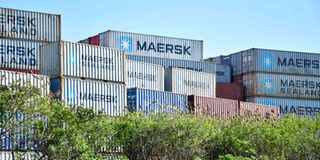Uganda now importing more from within Africa

Within Comesa, Uganda imported more from Kenya, South Sudan and Namibia. PHOTO | EDGAR R. BATTE
Uganda is gradually changing its import source markets, according to data from Bank of Uganda.
The country, which continues to be a net importer, currently, according to Bank of Uganda, sources much of its imports from within East Africa, Comesa and the Rest of Africa.
This is reflected in the Bank of Uganda report on the status of import trade for the period ended May.
Uganda had until the start of 2020 relied on China, some Middle East countries such as United Arab Emirates and partly Europe for imports.
However, according to the report the course is changing with the country importing goods worth $124.4m (Shs466b) from within Comesa in May.
This, the report indicates, is a 66 per cent increase from $41.4m (Shs155b) that the country spent on imports in April within Comesa.
Within Comesa, Uganda imported more from Kenya, South Sudan and Namibia.
Imports from Kenya, according to Bank of Uganda, doubled from $25.6m in April to $54.6m while imports from South Sudan stood at $52m (Shs195b) from just $0.16m (Shs600m).
However, the report does not indicate what Uganda imported from South Sudan in the period.
From the Rest of Africa, Uganda increased its imports to $61.6m (Shs231b) up from $43.5m (Shs163b) in April.
In the region, the country traded more with Tanzania, importing goods worth $41.7m (Shs156b) up from $19.3m (Shs72b).
Dr Susan Kavuma, an economist and lecturer at Makerere University School of Economics told Daily Monitor at the weekend that it was understandable that Uganda was, in the short-term importing more from within Africa, noting that lockdowns across the globe could have forced importers to look for alternatives.
“When borders open and passenger flights resume,” she said, “there is a likelihood we will return to the original source countries.”
During the period, there was a reduction in the import bill. Imports from Asia, which for years has been Uganda’s leading source, fell to $133.2m (Shs499b) down from $148m (Shs555b).
2015 audit
During the period, private sector imports stood at $409m up from $314m with mineral products, excluding petroleum products, standing at $131m.
Machinery, vehicles and accessories imports stood at $61.2m (Shs229.5b) while vegetable products, animal, beverages, fats and oil imports stood at $44m (Shs165b).




